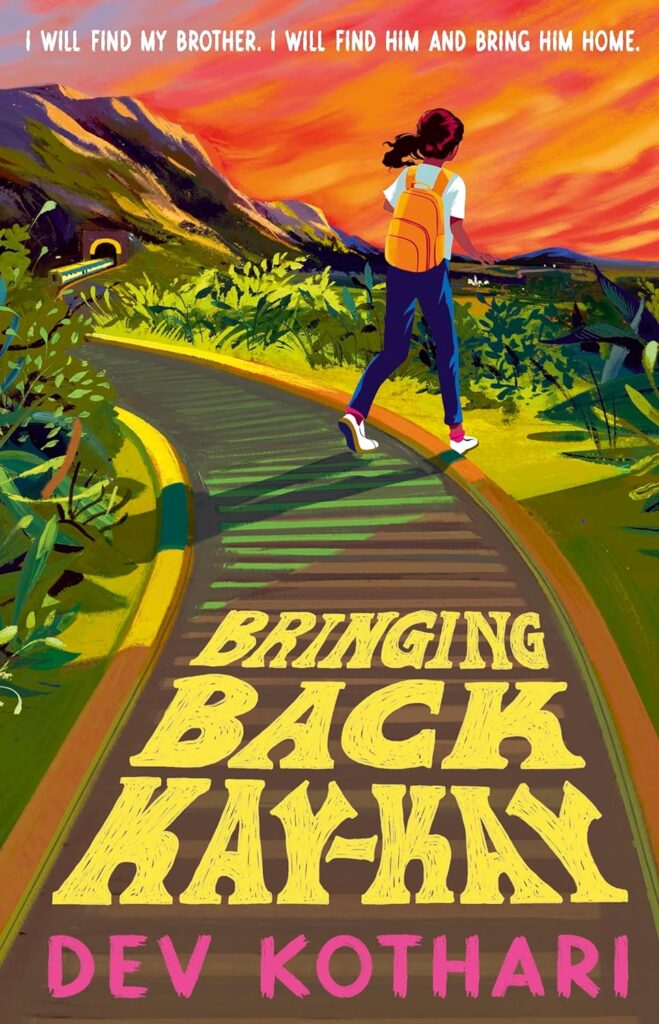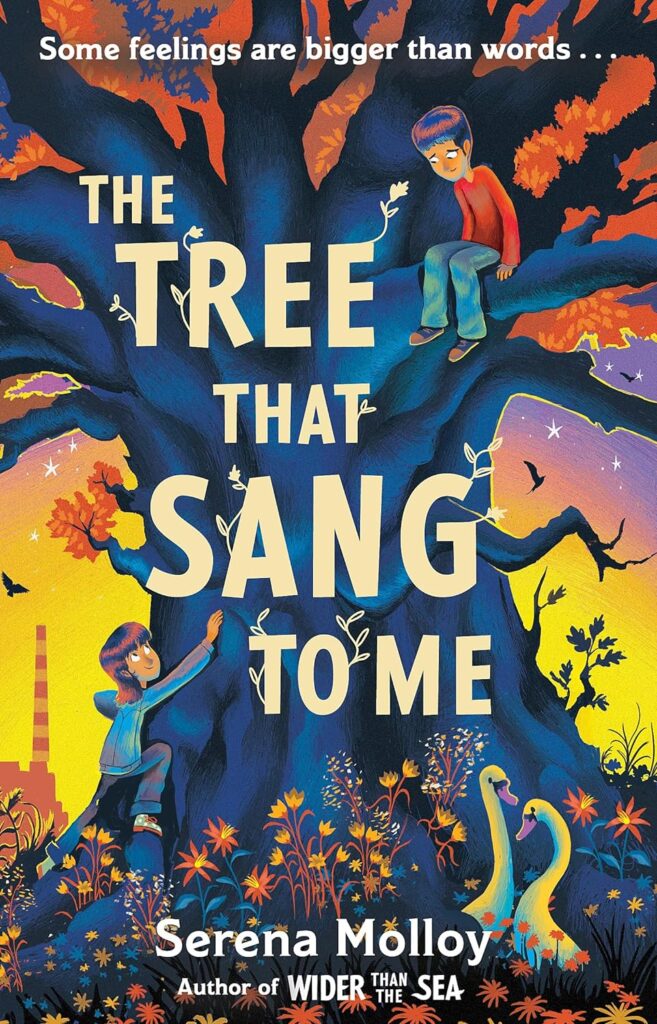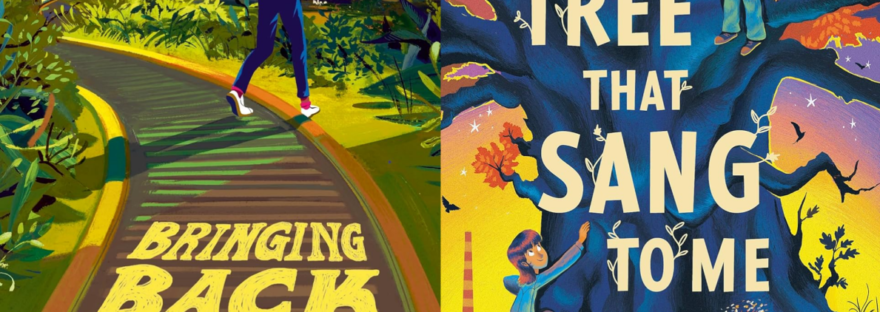This month’s review brings together two books that have a similar theme: both are from the perspective of a younger sibling dealing with an older sibling who is missing from their life, though the circumstances around it, and how they deal with it, are approached very differently.
Bringing Back Kay-Kay
By Dev Kothari (pub. Walker Books, 2024)
As he dragged me down the corridor, I turned around and glared at Inspector Sana, who had not moved. When he caught me looking, he yelled, “Mr Krishnan, I’d better not see your daughter at my police station again.”
That was the moment I knew I had to look for you myself.
When Lena’s older brother Kay-Kay goes missing after summer camp, the police assume he may have run away. But for Lena, things don’t add up…and when she finds Kay-Kay’s hidden stash of poetry, she knows that more is going on than they realise. And it’s up to her to find him.

Bringing Back Kay-Kay is all told from the perspective of young Lena on her mission to find her brother. Most of the book is written directly addressing Kay-Kay, showing us just what Lena thinks or feels in each moment.
The whole story is told through the lenses of the two siblings; for Lena, we see her actions, but for Kay-Kay, we see him through Lena’s eyes – and through his poetry. By lacing the story through with his poems and her memories, Kothari builds us a picture of Kay-Kay without us having to meet him.
The two threads of past and present show us a young girl who is neglected and selfish, and a young boy who is unhappy and overwhelmed but hiding it. As Lena journeys to find him, she uses her memories to recognise her behaviour and grow, and his poems to understand the hidden side of her brother better.
The chapters are short and compelling, and I enjoyed watching Lena develop as a character; such as the guilt that she feels at her parents’ attention when Kay-Kay is first noticed to be missing, which morphs into a guilt of her past treatment of him. To watch this blossom into awareness and to see how, despite constant setbacks and doubts, Lena refuses to quit, is inspiring.
The story shows us that it’s important to talk about your problems and your stresses, even when it’s hard…in fact, especially when it is. But it’s not one-sided – it’s equally important to pay attention to those we love, to show care and grace, and allow them to flourish as they are, rather than what we might want or expect them to be.
The Tree That Sang to Me
Written by Serena Molloy, illustrated by George Ermos (pub. Hodder Children’s Books, 2024)
I have this secret wish
that I could travel through time
and take one moment
back.
Kai is convinced that his big sister Jen leaving home is his fault. With all the tension and stress in the family, he needs to find his own space to be at peace. And this is just what the big wasteland tree gives him, up in its branches. Until one day a girl climbs up there too…a girl who might be just what Kai needs to open up.

The Tree That Sang to Me takes place over a number of months, shown to us by the changing landscape Kai can see from up in the tree. Rather than being a straight point-of-view story, it’s written as a stream of consciousness, following Kai’s thoughts about his sister, his family and friends, and the difficult feelings that he’s grappling with.
Unlike Lena, Kai can’t go looking for Jen – he knows where she is, and the fact that she left rather than goes missing means there’s no real ‘actions’ for him to take. Rather, he must process his thoughts and emotions stuck in one place, and the way he does is not only incredibly moving but very real.
The chapters are less like traditional sections and more like vignettes, which suits the way the story moves on over a longer time period. I loved the style of the text itself, which reflects what’s happening in the prose; ‘nothingness’ disappears into the background, while the letters in ‘leaps’ go up and down. (Sadly I couldn’t replicate this for the intro quote!)
The writing at times has an almost rhythmic or poetic feel to it, with the lines kept short and the emphasis given on certain important or striking words. Combined with the visual layout, it makes the prose feel almost alive. This is echoed by the gorgeously coloured front cover, and the evocative illustrations throughout.
It’s a story of empathy and acceptance, of being there for one another and – like with Kay-Kay – of talking with loved ones when times are hard. It is written to be dyslexia-friendly, and the verses sing to the reader just as the tree sings to Kai.
One lost, one left; one moving, one stuck still; one alone but always talking, one surrounded by people but quiet. Despite their differences, both stories are about the hardships and joys of family, about forgiveness and reflection, about communication and growth.
Both books deal with themes of loss, guilt, and negative emotions in a manner that is suitable for middle-grade readers.
If you want to join Lena and Kai as they make their journeys – both physical and emotional – you can get copies of Bringing Back Kay-Kay and The Tree That Sang to Me at the links above.
(Disclosure: If you buy books linked to our site, we may earn a commission from Bookshop.org, whose fees support independent bookshops.)
Looking for more books about the ups and downs of family? If so, you can see our previous family-themed book reviews here.

